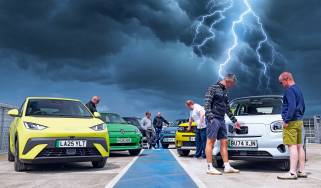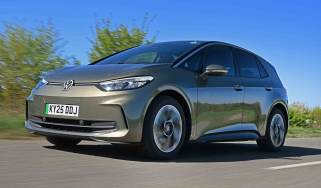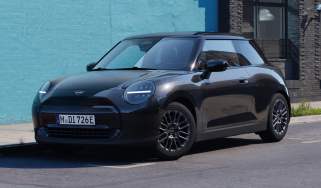Range Rover TDV6
We drive the all-new Range Rover on UK roads for the first time, with its new entry-level V6 diesel

Not only does the Range Rover hold on to its position as the pinnacle of premium off-roaders; it strengthens it even further. On or off-road, this car is top of its class by some way. The TDV6 is strong, and it makes the most sense for UK buyers. And although the SDV8 is slightly smoother, it does cost an extra £8,000.
The incredible off-road ability, the weight-loss and the fresh styling have all been major talking points of the new Range Rover. But what about the introduction of a new entry-level 3.0-litre V6 diesel to the range? We've driven it in the UK for the first time.
With 255bhp and 812Nm of torque, Range Rover claims this new V6 engine – combined with a car that’s 420kg lighter – is actually faster than the outgoing 313bhp TDV8 model.
On the road that certainly seems to be the case, and the figures bear this out – it will go from 0-60mph in 7.4 seconds, which is a tenth quicker than the old V8 turbodiesel managed. Combine this performance with CO2 emissions of 196g/km and fuel economy of 37.0mpg, and you can see why Land Rover expects this engine choice to be the biggest seller in the range.
Used - available now

2021 Land Rover
Range Rover
30,332 milesAutomaticPetrol2.0L
Cash £39,995
2017 Land Rover
Range Rover
76,100 milesAutomaticDiesel4.4L
Cash £23,995
2020 Land Rover
Range Rover
41,437 milesAutomaticDiesel3.0L
Cash £40,000
2021 Land Rover
Range Rover
46,647 milesAutomaticDiesel3.0L
Cash £41,750There is a little gap between putting your foot down and the car accelerating, but once it gets going the engine is effortlessly strong. The standard eight-speed gearbox is quick and incredibly smooth-shifting, too. Refinement is excellent, with only a slight diesel rumble as you get up to speed. The SDV8 version is the smoother and quieter choice by a small margin, though.
On the road, the Range Rover is composed and soaks up big bumps in the road with ease. It can occasionally feel jittery on some more uneven surfaces, but it’s a minor complaint in a car that is otherwise one of the most comfortable on the road.
The new electromechanical power-steering system is light and makes it much easier to move the car’s bulk (it might have shed 420kg, but it’s still as big car) around at low speeds.However, at higher speeds and in faster corners, it doesn’t weight up enough, which makes it difficult to feel what exactly the front wheels are doing.
Body roll has been significantly reduced over the previous car, and there’s only the slightest of lean in tight bends. And that’s forgivable for a car that is more than two tonnes and 1.8m tall.
Off-road, the Range Rover is even more impressive. The new Terrain Response 2, standard on Vogue SE cars up, constantly monitors both surface conditions and the car, to make sure it is in the correct setting. Even really testing terrain can be dealt with without the car breaking a sweat.


